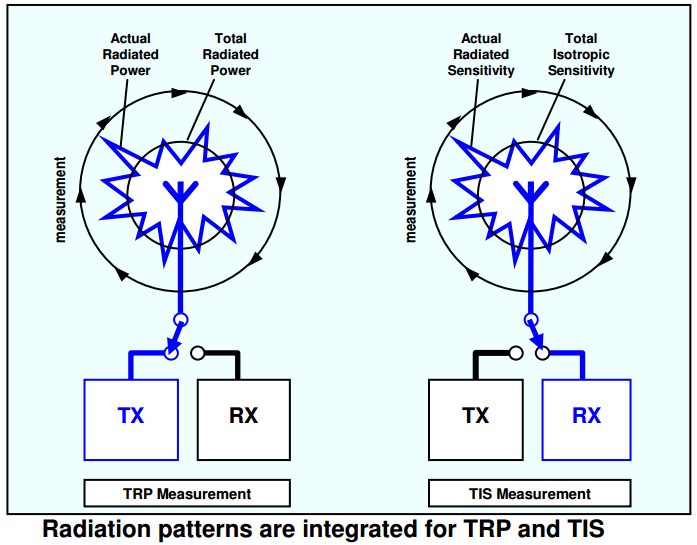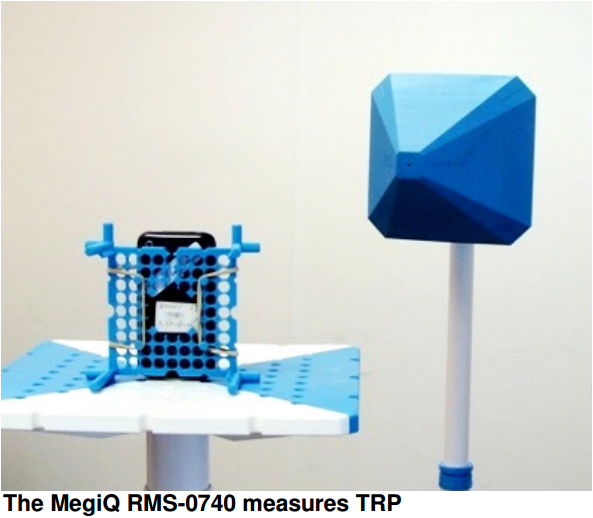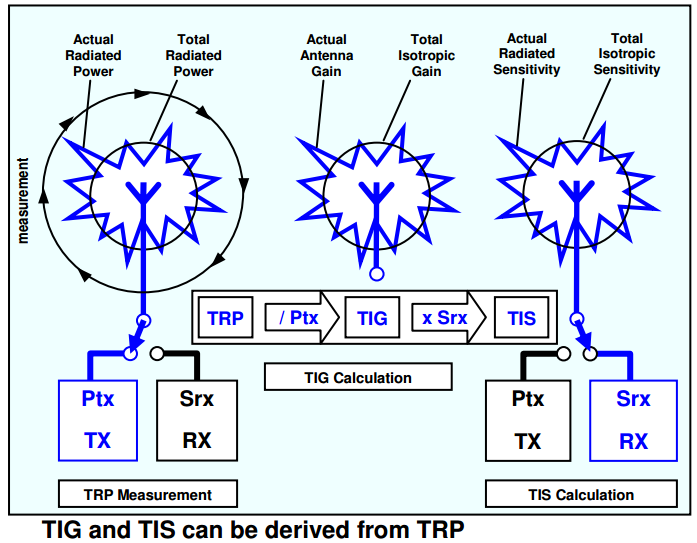News
Calculating TIS from TRP
For many Wireless Devices the Total Isotropic Sensitivity (TIS) can be derived from Total Radiated Power (TRP) together with the transceiver properties.
TRP and TIS measurement
Many modern wireless specifications require the Total Radiated Power (TRP)and Total Isotropic Sensitivity (TIS) of a wireless device to comply to a certain class of devices.
The TRP is measured by measuring the radiated power at many points around the device and sum the values to the total power radiated.
The TIS measurement is similar but a lot more involved because the sensitivity must be measured at many points. Not only does the measurement need to ‘speak’ the protocol but the determination of sensitivity for each measurement point takes a lot more time.

Many developers turn to test laboratories for these measurements but there are alternatives. With a substantial budget there are different kinds of test chambers available that can perform the TRP and, with optional components, also TIS measurements.
The MegiQ Radiation Measurement System (RMS) is capable of performing TRP measurements at a fraction of the cost but with similar accuracy. When the properties of the RF transceiver (chip) are known or measured, the TIS can be derived from the TRP results with only one additional, non-critical, sensitivity measurement.
Receiver interference
Wireless devices are usually part of a larger system that involves fast microprocessors, displays and switched power supplies. When the antenna is integrated in the device the other components can create significant amounts of in-band interfering noise that is picked up by the antenna. This raises the effective noise floor and impedes the receiver sensitivity. This is often a significant problem for devices that operate below 1.5GHz but the problem can also occur in the Wifi band.
The internal noise causes a degradation of the sensitivity and this is the main reason why the TIS is such an important number. It expresses the actual sensitivity under the working conditions of the device.

Relationship between TRP and TIS
Most wireless devices use the same antenna for both transmitting and receiving. Since the received signal goes through the same antenna as the transmitted signal, they both get the same antenna gain in their path.
The signal in a certain direction is amplified by the gain of the antenna in that direction. If the gain is greater than 0dB the signal gets amplified, otherwise it is attenuated by the antenna. Both TRP and TIS depend on the same antenna gain.
Deriving TIS from TRP
When the TRP is known (measured) and the conducted power of the transmitter is known (measured) the gain of the antenna can be calculated by dividing TRP by the transmit power. Since TRP is an ‘isotropic’ value the antenna gain is also an ‘isotropic’ value and is called Total Isotropic Gain (TIG) and is expressed in dBi.
The TIG is also a measure of the efficiency of the antenna: it depicts the amount of energy that is radiated compared to the amount of energy that is supplied to its input. Due to losses in the antenna the TIG is always less than 0dBi.
The TIS can then be calculated by applying the TIG to the sensitivity of the receiver. When the sensitivity of the receiver is known (measured) and the TIG is known (calculated from TRP) the TIS can be calculated by multiplying the sensitivity with the TIG:
• TIG = TRP / Ptx, or in dB: TIG = TRP - Ptx
• TIS = TIG * Srx, or in dB: TIS = TIG + Srx

Source: RSI
Others
- TECOTEC GROUP ATTENDED SHIMADZU’S SERVICE MANAGER MEETING IN 2022
- TECOTEC HANDED OVER EDX-7000 X-RAY FLOURESCENCE SPECTROMETER AT NIDEC CHAUN CHOUNG VIETNAM
- INSTALLATION OF CHIP PROCESSING SYSTEM – LANNER/ GERMANY
- TECOTEC completed installation of EDX-LE Energy dispersive X-ray Fluorescence spectrometer at DYT Vina
- TECOTEC DELIVERED AND INSTALLED THE 2ND X-RAY FLUORESCENCE SPECTROMETER - EDX-LE PLUS AT TABUCHI
- TECOTEC Group has handed over PDA-7000 Optical Emissions Spectrometers for Nihon Plast Vietnam
- Bowman XRF Coating Measurement System For Electroless Nickel Plating
- TECOTEC DELIVERED AND INSTALLED SMX-2000 SYSTEM TO NIDEC TECHNO MOTOR VIETNAM



